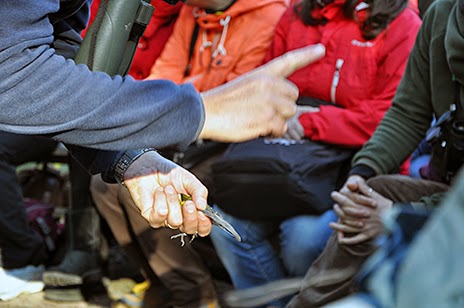 |
| Migration course 2013. Photo: Tom Evans |
November this year we look forward to two intensive weeks discussing and learning about the 'Ecology of Animal Migration'. Yes, this November (2015) it will be time for the biannual PhD course on animal migration. This year we are pleased to welcome back many popular lecturers from both within CAnMove at Lund University, and old friends from further afield. The course promises to cover everything from how animals find their way (navigation) to why animal migrate (evolution) via how animals move (locomotion) and many other topics. With migration across a wide variety of taxa and species discussed including marine fish, raptors, songbirds, moths, moose, and even daphnia!
The course offers the opportunity to learn a lot, talk to key researchers in your field, and meet fellow migration research students from all over the World.
 |
| Migration course 2013. Photo: Tom Evans |
Don't miss this if you are a PhD student with an interest in animal migration. If you know a PhD student who might be interested, then please point them in this direction!
More information and course application:
http://canmove.lu.se/ecologyofanimalmigration2015
Ecology of Animal Migration - International PhD course
Lund University, Sweden
Monday 2nd - Friday 13th, November 2015
/Tom Evans









